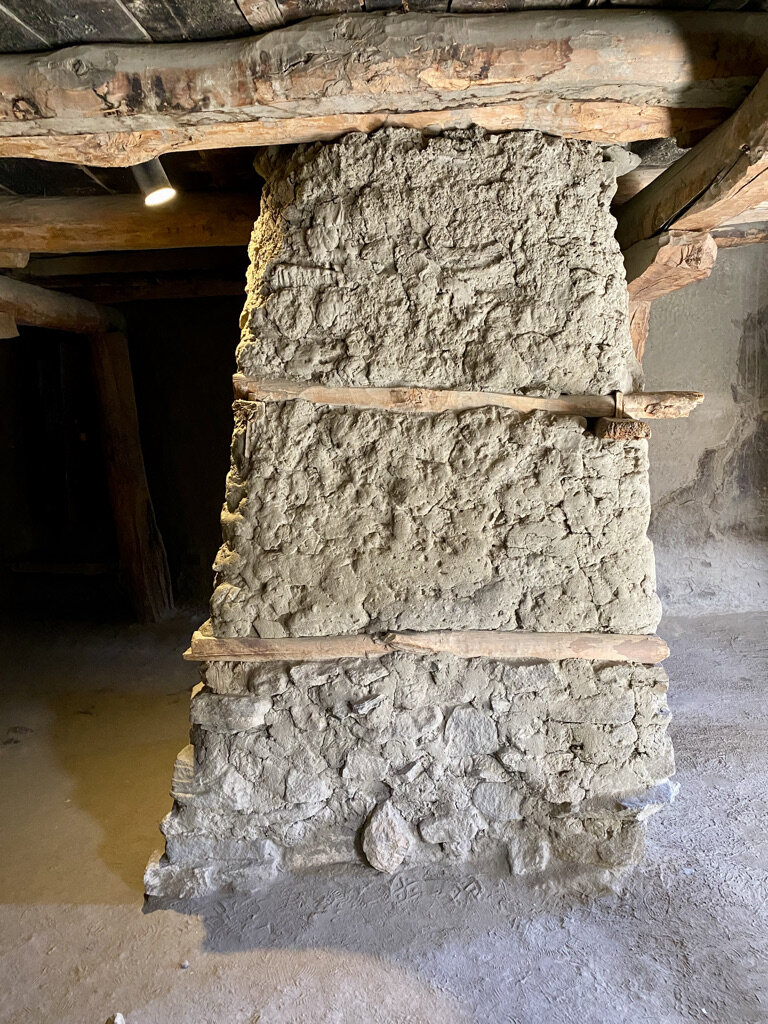Postcard from Altit Fort - a thousand year old fort with a thousand foot drop
As you can see from this photo Altit Fort sits high above the Hunza River. There is a straight, 1000 foot drop from the fort to the river below. The Fort started as the traditional home of the local Mir, or king. It sits in a strategic position overlooking the Ulter Glacier and the Hunza Valley. The Fort’s prime position made sure that the Mir was ready against attack at all times.
The Fort has been wonderfully restored by the Aga Khan Trust for Culture and the Norwegian Government from 2006 to 2010. The Fort is built of wood, stone and mud. The use of alternating wood with stone made it able to withstand earthquakes. Looking up at the Fort you realise that it would be difficult to build today, let alone 1000 years ago.
Inside the Fort you can find rooms with furniture and belongings giving an idea of what life might have been like for the Mir and his family. Each room has intricately carved door lintels and window shutters. Doors and ceilings are low, windows are small to keep in the heat.
The Fort has a fascinating history revolving around princes, politics and pillars. Around 1540 a new fort, Baltit Fort, was built in Hunza (the subject of my next blog). Prince Shah Abbas moved to Baltit Fort, and it became the new capital of Hunza. Prince Shah Abbas’ younger brother, Prince Ali Khan, remained at Altit Fort. The two brothers fought and it is believed that Prince Shah Abbas buried his younger brother alive in a pillar in one of the rooms in Altit Fort. This is not the only story of death at the Fort. Altit Fort has one tower ‘Shikiari’ or ‘Hunters Tower’. Prisoners were held in dungeons and sentencing could involve being thrown from the tower over the cliff.
However today you will find it a peaceful place. After spending time looking around the Fort you can enjoy a walk through the beautiful gardens and stop at Kha Basi, a former Mir’s winter residence, now a café with great views.
As we were walking around the garden, we heard some wonderful music. Set in a corner of the garden is a music school where students can learn to sing and play traditional Pakistani instruments. We had been walking past during one of their rehearsals and were fortunate enough to be invited into the school to listen to the students play. As a bonus our travel guide and our guide from the fort got up to dance. It was a wonderful end to our visit to Altit Fort – an afternoon of history, politics, music and culture.
Altit Fort built closely around the rock base
Front door to Altit Fort
The pillar!
The kitchen
View from the top of the Fort across the Hunza Valley
Old Altit Town sitting under the Fort
























